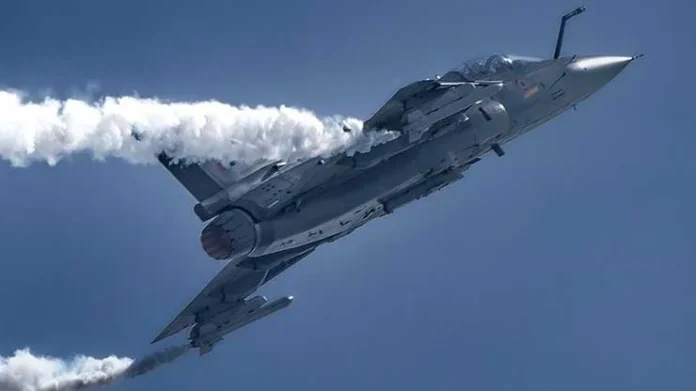New Delhi: The Indian Air Force is poised to field its first stealth-capable indigenous fighters far ahead of previous projections. The Defence Research and Development Organisation (DRDO) has begun active flight trials of its advanced electronic warfare (EW) suite, named ‘Swayam Raksha Kavach’, on the Tejas MK-1A light combat aircraft.
This system, translating to ‘Self-Defence Shield’, is engineered to make the Tejas MK-1A nearly invisible to hostile radars, while robustly defending against missile threats. The newest development comes as India awaits the Advanced Medium Combat Aircraft (AMCA), its designated fifth-generation fighter, which remains almost a decade away from squadron entry.
Hindustan Aeronautics Limited (HAL) manufactures the Tejas MK-1A, positioning it as India’s most advanced operational indigenous fighter. With the integration of Swayam Raksha Kavach, the aircraft’s survivability in contested airspace rises dramatically, paralleling some aspects of global fifth-generation platforms like the US F-35 and Russian Su-57.
Swayam Raksha Kavach comprises a wide-spectrum Radar Warning Receiver (RWR) and an Advanced Self-Protection Jammer (ASPJ) designed around Digital Radio Frequency Memory (DRFM) technology. The RWR instantly alerts pilots upon detection by enemy radar, enabling timely evasion or counteractions. The ASPJ, leveraging DRFM, transmits sophisticated false signals and jamming waveforms, muddling hostile radar systems and complicating missile guidance. This combination delivers a multi-layered barrier, reducing the Tejas’s effective radar cross-section from the perspective of ground and airborne radars.
Contrary to conventional low-observable techniques, such as airframe shaping and radar-absorbing coatings, Swayam Raksha Kavach achieves ‘functional stealth’ through electronic measures. The system does not render the aircraft physically invisible but significantly complicates detection and tracking by enemy systems.
Manufacturing of Swayam Raksha Kavach commenced in 2021 at DRDO’s Centre for Airborne Systems. Operational induction of the system on IAF platforms is expected to be achieved by 2026, with initial flight validations now progressing. This ambitious timeline effectively bridges the operational gap until the AMCA enters service.
In operational terms, Tejas MK-1A equipped with Swayam Raksha Kavach gains a substantial edge in survivability and lethality. Pilots can operate closer to contested zones, undertake strike or defensive missions with substantially reduced exposure to radar-guided threats, and enhance mission success rates. The Tejas MK-1A’s cockpit and avionics have been adapted to fully integrate the Swayam Raksha Kavach suite, maximising pilot situational awareness and automatic threat response cycles. This modernisation aligns with current trends in electronic warfare, where software-defined, adaptive jamming and cognitive threat recognition play critical roles.
HAL received government sanction for 97 additional Tejas MK-1A jets in September, including 68 single-seat and 29 twin-seat variants. These fighters are expected to be delivered with factory-fitted Swayam Raksha Kavach, marking a significant leap in the indigenous jet’s survivability.
India’s rapid induction of advanced EW and self-protection systems underscores its commitment to fielding world-class indigenous air power. While AMCA remains in development, the Tejas MK-1A, now with Swayam Raksha Kavach, secures a frontline role, representing an important milestone in India’s aerospace evolution.





